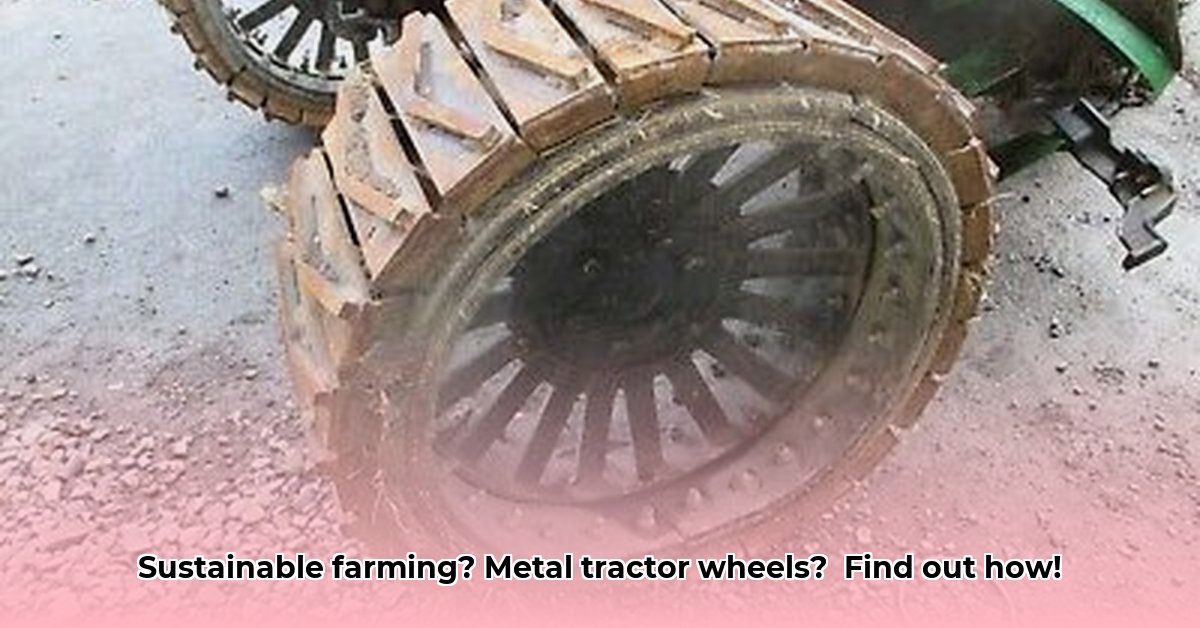
Sustainable agriculture demands innovative solutions, and the use of pre-owned metal tractor wheels offers a compelling pathway to both environmental responsibility and cost savings. This guide provides actionable steps for farmers and agribusinesses to leverage this sustainable practice effectively. For more on metal tractor parts, check out this helpful resource: metal tractor parts.
Understanding the Used Metal Tractor Wheel Market
The market for used agricultural equipment components, including metal tractor wheels, is dynamic and presents significant opportunities for cost-effective sustainability. Prices fluctuate based on factors such as wheel size, brand, condition, and overall market demand. Common sourcing avenues include online marketplaces (e.g., eBay, specialized agricultural equipment sites), local farm equipment dealers, and auctions. However, thorough due diligence is crucial; a seemingly bargain-priced wheel with hidden damage could lead to costly repairs or safety hazards. Isn't it worth the extra effort to ensure longevity and safety?
Assessing Used Metal Tractor Wheels: A Step-by-Step Guide
A meticulous inspection is paramount before purchasing any used metal tractor wheel. This process significantly minimizes the risk of acquiring a faulty component and ensures both safety and operational efficiency.
Step 1: Visual Inspection: Begin with a comprehensive visual examination. Look for cracks, bends, significant rust, or any other signs of structural compromise. While minor scratches are acceptable, deeper damage requires careful consideration. Remember, compromised structural integrity can lead to equipment failure and potential injury.
Step 2: Alignment Check: Assess the wheel's alignment. Any wobble or uneven wear indicates potential problems that could negatively impact tractor performance and handling. A smoothly rolling wheel is essential.
Step 3: Tire Condition (If Applicable): If tires are mounted on the wheels, thoroughly inspect the tread depth, looking for cracks, bulges, or embedded objects. Deep cuts or sidewall damage are significant safety concerns.
Step 4: Hub and Mounting Point Examination: The hub, the central point connecting the wheel to the axle, must be thoroughly inspected for damage and wear. A secure fit is critical for safety and stability. Visible repairs or welding may indicate previous issues.
Finding Reputable Suppliers: Due Diligence and Trust
Choosing reputable suppliers is paramount to achieving long-term success with pre-owned equipment. Consider these avenues:
Online Marketplaces: Utilize online platforms, but carefully vet sellers. Read reviews, check seller ratings, and inquire about return policies. This is analogous to checking restaurant ratings before dining out – it's a prudent practice.
Local Equipment Dealers: Local dealers often stock pre-owned parts and provide valuable insights into their condition and history. Their expertise can be invaluable.
Farm Auctions: While auctions offer potential for significant savings, thorough pre-auction inspection is critical; the "buyer beware" principle applies strongly here.
Safe Usage and Responsible Disposal: Minimizing Environmental Impact
Sustainable practices extend beyond procurement; safe usage and environmentally responsible disposal are equally crucial.
Safe Usage: Regularly inspect wheels before each use to identify early signs of damage. Damaged wheels should be replaced immediately, prioritizing operational safety.
Responsible Disposal: At the end of a wheel's lifespan, follow local regulations for responsible disposal and recycling. Many facilities accept scrap metal, contributing to reduced landfill waste.
Long-Term Sustainability Planning: A Holistic Approach
Thinking long-term enhances both sustainability and economic viability. Consider these strategies:
Tire Rotation (if applicable): Rotating tires ensures even wear, extending their lifespan and improving fuel efficiency. Regular rotation is a simple but effective measure.
Proper Inflation (if applicable): Maintaining correct tire pressure optimizes tire life and reduces fuel consumption. Insufficient pressure leads to increased wear, while excessive pressure can cause damage.
Preventive Maintenance: Regular maintenance prevents small problems from escalating into costly repairs, contributing to longer equipment lifespans. This proactive approach is critical for cost-effectiveness.
Conclusion: A Sustainable and Economical Choice
The adoption of used metal tractor wheels represents a significant step toward sustainable agriculture. By meticulously assessing wheel condition, sourcing components from reputable suppliers, practicing safe usage, and adopting a responsible disposal approach, farmers can achieve important cost savings while significantly reducing their environmental footprint. It's a powerful combination of financial prudence and environmental stewardship.